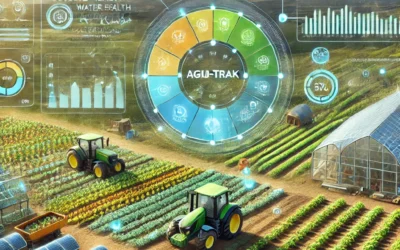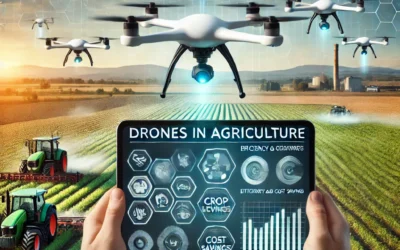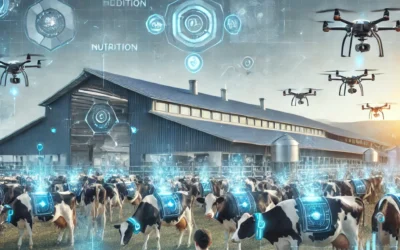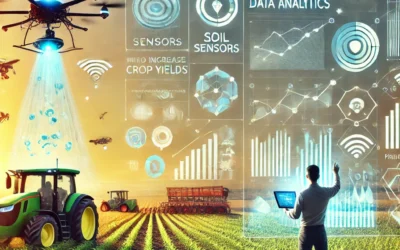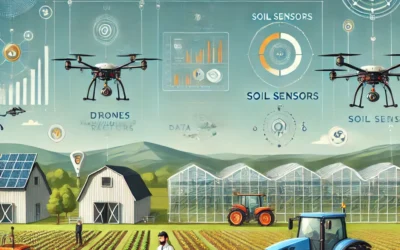Data-driven farming, or precision agriculture, is reshaping the way farmers manage their crops and resources. By leveraging data collected from various sources, such as sensors, drones, and satellite imagery, farmers can make more informed decisions, optimize resource use, and increase crop yields. Precision agriculture is not just about applying technology—it’s about using the right data at the right time to improve efficiency and sustainability.
1. Data Collection: The Foundation of Precision Agriculture
The first step in precision agriculture is gathering data. This is achieved through a variety of tools and technologies, including soil sensors, weather stations, GPS, and drones. These tools provide real-time information about soil conditions, moisture levels, crop health, and environmental factors, such as temperature and humidity. The data collected is crucial for making decisions on planting, fertilizing, irrigating, and harvesting crops.
For example, soil sensors can measure the nutrient content and moisture levels in different parts of a field, allowing farmers to apply fertilizers or water only where it is needed. Drones equipped with multispectral cameras can provide images of crop health, enabling early detection of disease or pest infestations.
2. Data Analytics: Turning Information into Action
Collecting data is only the beginning. The real power of precision agriculture comes from analyzing that data to derive actionable insights. Modern software platforms can process vast amounts of data and present it in easy-to-understand formats, such as maps or graphs. These platforms use machine learning algorithms to identify patterns and trends that might not be obvious to the naked eye.
For instance, by analyzing data from previous growing seasons, farmers can predict which areas of their fields are more likely to experience issues like poor drainage or nutrient deficiencies. This allows them to take preventative measures, such as improving soil composition or adjusting irrigation schedules, before problems arise.
3. Variable Rate Technology: Precision at Its Best
One of the most significant applications of data in precision agriculture is variable rate technology (VRT). VRT allows farmers to apply inputs—such as seeds, fertilizers, and pesticides—at variable rates across a field based on the specific needs of each area. Rather than treating the entire field uniformly, VRT ensures that resources are used efficiently, reducing waste and improving crop health.
For example, a farmer might use VRT to apply more fertilizer to areas with nutrient-poor soil while reducing the amount applied to areas with nutrient-rich soil. This not only improves crop yields but also minimizes the environmental impact by preventing over-application of chemicals.
4. Predictive Analytics: Preparing for the Future
In addition to optimizing current operations, precision agriculture allows farmers to use predictive analytics to prepare for future challenges. By analyzing historical data and weather forecasts, farmers can make predictions about crop performance and potential risks. This helps them plan their planting and harvesting schedules, choose the best crop varieties, and even decide when to apply certain inputs.
Predictive analytics can also be used to forecast market conditions, helping farmers make informed decisions about when to sell their crops to maximize profits.
Conclusion
Data is at the heart of precision agriculture, enabling farmers to make informed decisions that optimize resource use, increase crop yields, and reduce environmental impact. From data collection and analysis to variable rate technology and predictive analytics, the role of data in farming is transforming agriculture into a more sustainable and efficient industry. As the technology continues to evolve, farmers who embrace precision agriculture will be better equipped to meet the challenges of feeding a growing global population.


